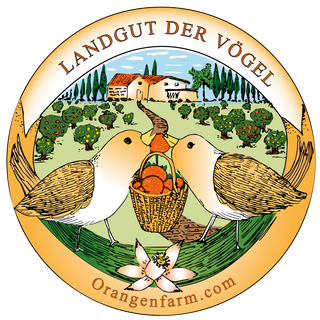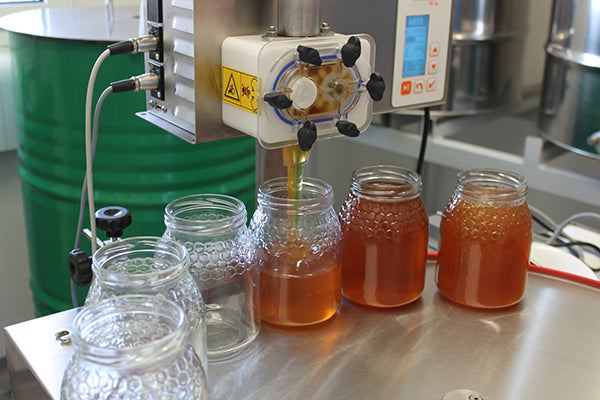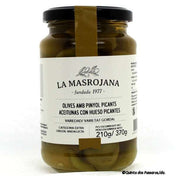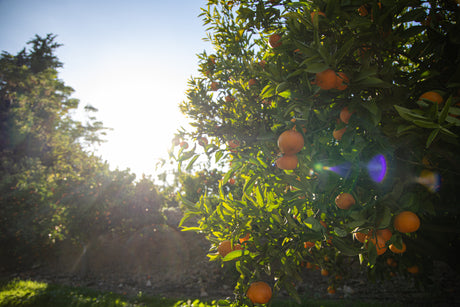Why is honey from Portugal so good?
Honey from Portugal is particularly good due to a combination of climatic, geographical and ecological factors as well as traditional beekeeping methods:
-
Flora diversity : Portugal, especially regions like the Alentejo, boasts a rich and diverse flora. Bees have access to a wide variety of flowers, including wildflowers, herbs, and aromatic plants such as lavender, rosemary, and thyme, which impart unique aromas and flavors to the honey.
-
Favorable climate : Portugal's Mediterranean climate, with its warm, dry summers and mild winters, provides ideal conditions for beekeeping and honey production. Bees can collect nectar almost year-round.
-
Untouched nature : Many beekeepers in Portugal operate their hives in remote, sparsely populated areas. This reduces exposure to pollution and pesticides, resulting in purer, higher-quality honey.
-
Traditional beekeeping : Portugal has a long tradition of beekeeping, with many traditional methods still being used. Many beekeepers use natural wooden boxes and avoid chemical treatments, resulting in natural honey.
-
Sustainable practices : Portuguese beekeepers often place great importance on sustainable beekeeping. They ensure that they only collect enough honey for the bees to provide themselves with enough sugar without supplemental feeding. This contributes to the health and vitality of the colonies and promotes the production of high-quality honey.
These factors together ensure that honey from Portugal is not only outstanding in taste, but also of high quality and purity.
We have been working with beekeeper Francisco Cortes and his family for approximately 25 years. They have been producing honey with their bees, passionately and in close touch with nature, for 90 years. The bees they care for live in natural wooden boxes, primarily in a sparsely populated area, the Alentejo, which is part of the "Sudoeste Alentejo e Costa Natural Park." The bees are only given enough honey to ensure they can sustain themselves without additional sugar.

Did you know?
Pollen , a fine, colored powder found in flowers, is the male reproductive element of plants, collected by bees for food. The pollen collected by bees is nature's most complete and valuable food. Our bodies need 22 essential amino acids to function properly. Most foods contain one or two of these amino acids. Pollen alone contains all twenty-two.

Honey is one of the most wonderful and nutritious sweeteners and foods there is.
To make honey, bees collect nectar from flowers, but also the nectar-like secretions of trees and shrubs.
Foraging bees visit countless flowers, transporting the collected nectar in a honey stomach. Once home, the unfinished honey is transferred to the hive bees, who, through transferring, add acids, enzymes, and proteins, producing inhibins that inhibit the growth of bacteria and yeast. This transfer occurs frequently. In other words, the honey is taken in and released again, creating honey in the bee's body. This process also involves reducing the water content.
When the honey is ripe, the bees fill it into the honeycombs and seal it with a wax lid.
How is a bee colony structured?
A bee colony is a highly organized and complex community consisting of three main categories of bees: the queen, the workers, and the drones. Each of these groups has specific tasks and roles within the colony that are crucial to the survival and functioning of the colony.
The Queen
- Function : The queen is the only reproductive female bee in the colony. Her primary function is to lay eggs. She can lay up to 2,000 eggs per day.
- Life expectancy : The queen can live for several years, on average about 2-5 years.
- Pheromones : The queen produces pheromones that regulate the behavior of the workers and hold the colony together.
The workers
-
Task : Workers are non-reproductive female bees and perform various tasks depending on their age. These tasks include:
- Nurse bees : Young worker bees care for the brood and feed the larvae.
- Building bees : In middle age they produce wax and build honeycombs.
- Guard bees : They guard the entrance to the hive.
- Foragers : Older workers collect nectar, pollen, water and propolis.
- Hive bees: perform a variety of important tasks within the hive, including processing nectar into honey.
- Life expectancy : Workers live about 6 weeks in summer, in winter they can live several months.
The drones
- Task : Drones are the male bees in the bee colony and their main task is to mate with a queen.
- Life expectancy : Drones live only a few weeks and die after mating. In late summer and autumn, they are often driven out of the hive by workers, as they are of no use in winter and only consume resources.
Structure of the beehive
- Brood nest : In the center of the hive are the brood combs, where the queen lays her eggs. Here, the eggs develop into larvae and eventually into adult bees.
- Honeycombs : Around the brood nest are the honeycombs, in which the nectar collected by the workers is stored and processed into honey.
- Pollen combs : These combs store the collected pollen, which serves as a protein source for the brood.
- Propolis : Bees use this resinous material, which they collect from trees, to seal and disinfect cracks and crevices in the hive.
A bee colony is therefore a highly complex system with a division of labor, based on the cooperation and specialization of its members.

Average values per 100g of blossom honey:
Nutritional value:
- Calorific value: 1282 kJ (302 kcal)
- Water: 16–23 g
- Protein: 0.38 g
- Carbohydrates: 77–84 g
Vitamins and minerals:
- Vitamin B1: 3.0 μg
- Vitamin B2: 50.0 μg
- Vitamin B6: 159.0 μg
- Vitamin C: 2.4 mg
- Calcium: 6.0 mg
- Iron: 1.3 mg
- Magnesium: 1.6 mg
- Sodium: 2.4 mg
- Phosphorus: 4.9 mg
- Potassium: 45 mg
- Zinc: 350 μg



